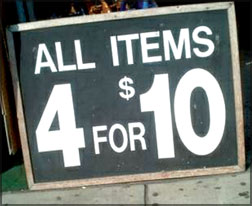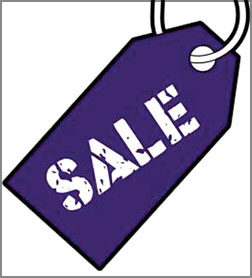|
Marketing and selling in favourable economic
conditions:
Is ‘push marketing’ a blight on selling?
Prasanna Perera Marketing & Management, Consultant,
Chartered Marketer, CIM U.K.
|

Prasanna Perera |
A PUSH strategy essentially involves pushing products into the
distribution channels through distributors, agents, wholesalers,
retailers and direct dealers. There is nothing wrong in this strategy,
except that too much emphasis is being paid to same, without balancing
the PUSH and the PULL. (Targeting end-users or consumers).
PUSH vs PULL Strategies
For the record let me outline push and pull strategies. Pull
strategies are targeted at end-users/consumers through advertising and
consumer promotions. Push strategies target distribution intermediaries,
through trade promotions, intermediary competitions etc., A good balance
between the Push and Pull is required. Why? If there is more Push than
Pull the distribution channels will be overstocked. On the other hand,
excessive Pull will result in stock-out situations. Neither is desirable
from a professional marketing standpoint.
Why do Sri Lankan Marketers emphasize the Push Strategy Over the
Pull?

I have observed that both consumer and industrial goods marketers
concentrate more on the Push than the Pull. (BTL - below the line over
ATL - above the line). The reasons to my mind are outlined below.
Firstly, in most organizations salespersons call the shots over the
marketers. The belief is that if you Push, you can sell. There is no
need to create demand Pull.

Since Sri Lanka is a developing country, the traditional retailer
(shops) dominates over the modern retailer (supermarkets and self
service stores).
Hence, it is believed that by incentivizing the traditional retailer,
they will Push the products/brands. Therefore, the retailer is expected
to change the consumer mindset at the point-of-purchase.
Retailers and wholesalers are also becoming demanding, since they
have many suppliers knocking on their doors. The balance of power has
clearly moved away from the manufacturer to the distribution
intermediaries. Top Management also encourages short-termism i.e.
achieving this months and next months targets. Therefore, once again the
Push strategy is seen as the savior.
Accountability for expenditure is easier with the Push, when compared
with the Pull. Push strategies can be measured in terms of sales and
profit impact, in the short term.
Pull strategies are harder to measure (specially advertising), since
they have a lag effect and results are seen long term.
Marketers lack assertiveness, over the sales teams. Most brand
managers and executives also target the marketing principles and get
pressurized to go for short term gains. Lack of good market research
inputs, also results in Push strategies given preference over the Pull.
Organizations have not researched the consumer/end-user-decision making
process. Hence, they are assuming that the Push is what generates sales
revenue and volume.
The Dangers in Over Emphasizing the Push Strategy
The biggest danger is that brand equity will be eroded in the long
term. Consumers/end-users will lack awareness about the brand being
marketed and demand Pull will decline.

Consumer loyalty will be compromised for intermediary / trade
loyalty. This is a dangerous trend, as traders loyalty is directly
related to functional benefits (profits), as opposed to emotional
benefits desired by consumers/end-users.
Many intermediaries are pampered by foreign trips, weekend holiday
packages and many other incentives. In fact, many distributors and
dealers are travelling the globe at company expense.
My question to Marketers/Sales Persons is “do these incentives make
intermediaries more loyal to your organizations and brands?” What would
happen if better offers are made by your competitors? For example your
organization offers a trip to Bangkok and a competitor to Europe.

Too much of Push, also creates price based competition, as products
and brands are commoditized.
This is detrimental to organizations in the longer term, as profit
margins get eroded, together with the working capital situation.
What is the Solution? A Balance Between the Push and the Pull
Balancing the Push and the Pull is what should be done.
Do not neglect the end-user, as well as the distribution
intermediaries. Allocate marketing budgets accordingly. Conduct
continuous market research to understand market trends and end-user
buying behaviour.
By creating demand Pull, the balance of power can be pulled back from
the intermediaries, to a certain extent.
Do not forget marketing principles. The consumer is the final
authority, in the long term, specially with the modern trade growing in
Sri Lanka.
In the next 5 - 10 years the entire Push ball game will change. |



